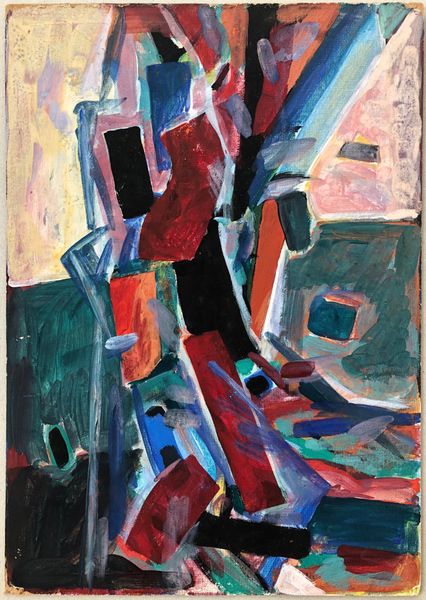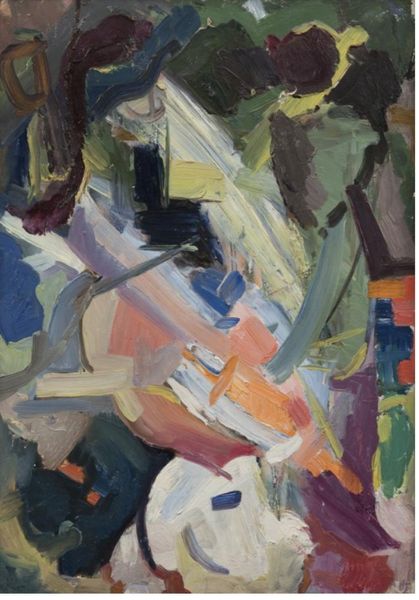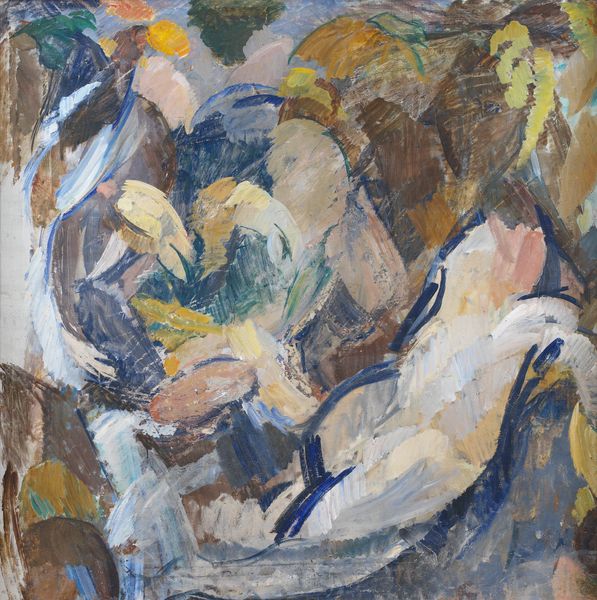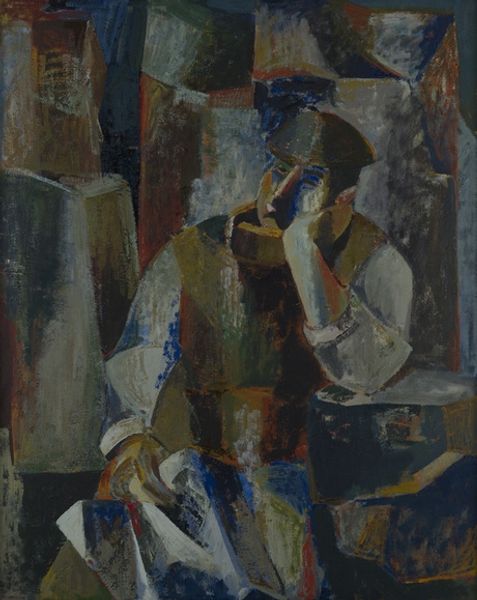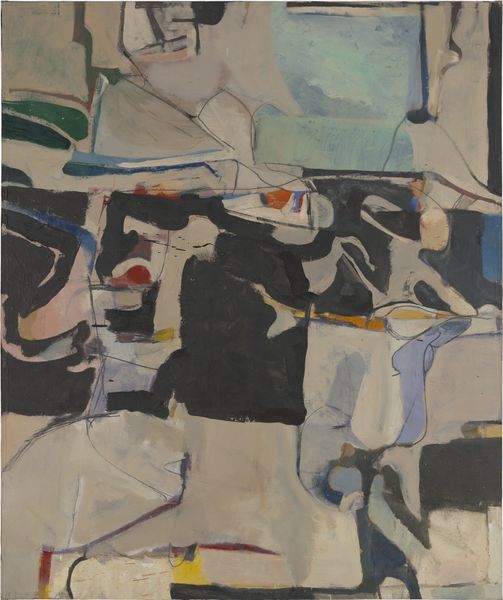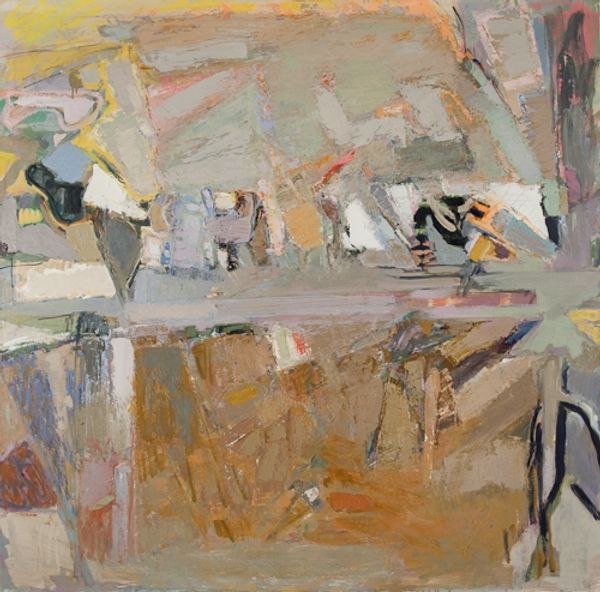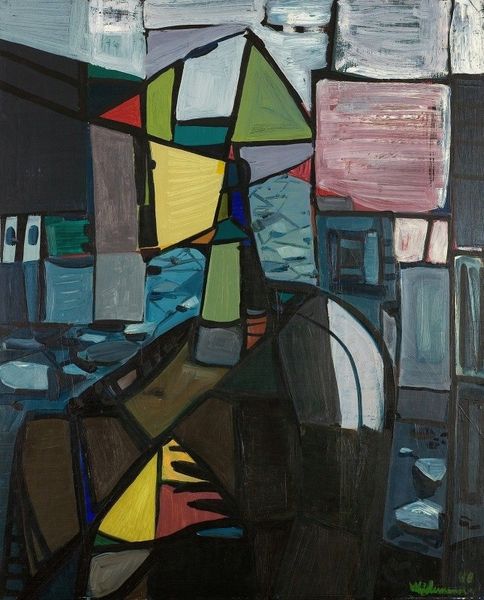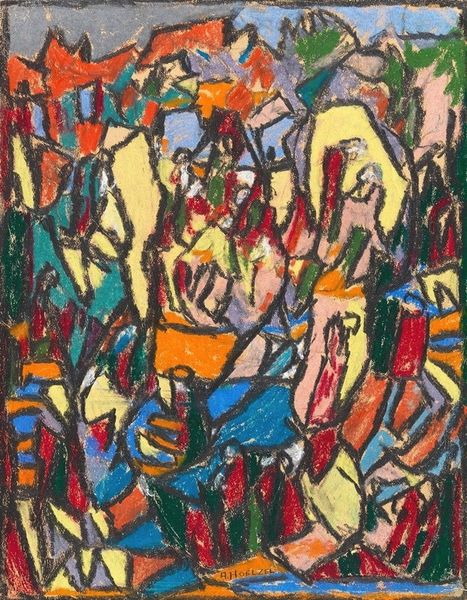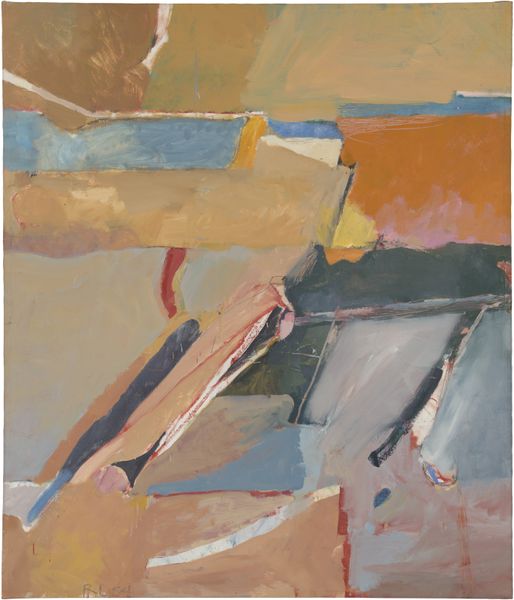
Dimensions: 153 cm (height) x 138 cm (width) (Netto)
Editor: Right here, we have Edvard Weie’s "Study after Delacroix's 'Dante og Vergil,'" created between 1923 and 1927. The oil on canvas seems very… turbulent, almost violently applied. I’m curious, focusing purely on the paint and composition, what stands out to you? Curator: Note the heavy impasto. Weie has applied the oil paint in thick, deliberate strokes. Observe how the chromatic scale pulls bilaterally from verdant cool on one side toward earthen, sunbaked tones on the other, suggesting a landscape divided, not just pictorially but also experientially. Does this fracturing of form serve only as reference to the original painting by Delacroix? Editor: I see that divide you mention, a dynamic tension. The brushstrokes are so raw; you can almost feel the artist's hand moving. Is the dynamism simply a factor of the Fauvist style? Curator: The "how" often dictates the "what," does it not? Note how he sacrifices mimetic representation for purely gestural articulation. The color itself is the subject as much as the scene he is allegedly portraying, allowing the original Romantic painting to become completely divorced from Weie’s pure expressionistic gesture. Do you observe Weie creating a completely novel work by visually ingesting Delacroix’s "Dante og Vergil?” Editor: That makes sense; I see how the Fauvist elements create something entirely separate, transforming the original through the dynamism and materiality of the paint itself. It feels much less like an interpretation and more like a response. Curator: Precisely. He engages with the pre-existing form, erodes it and reinvents its pictorial rhetoric via the textural qualities that stand autonomously on the canvas. Editor: This focus on paint quality really reframes my understanding – it’s like a conversation across time, through texture and color! Curator: Indeed. We both learned a thing or two on color and application today!
Comments
No comments
Be the first to comment and join the conversation on the ultimate creative platform.
